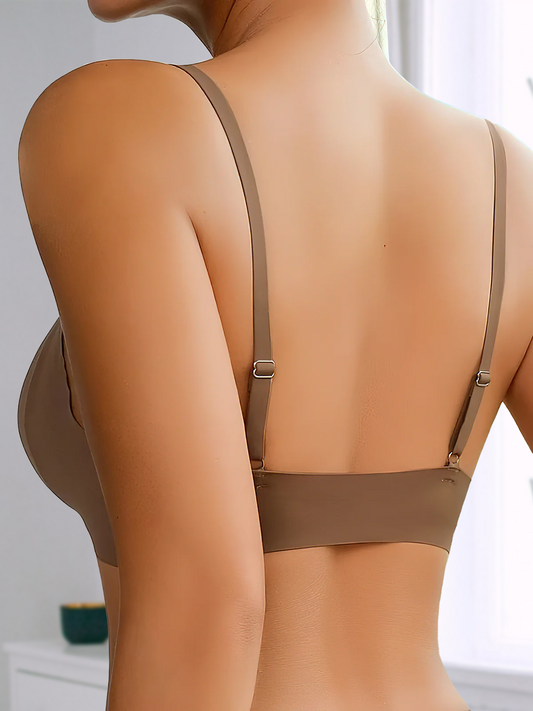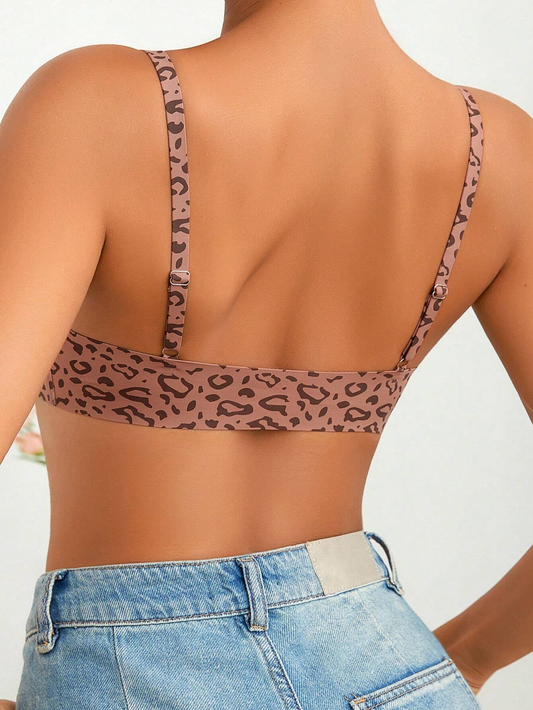
Got a tape measure? Then you don't need to endure an embarrassing bra fitting at the lingerie store.
Anyone who has worn an ill-fitting bra or the wrong bra size knows that doing so can ruin an otherwise flawless outfit—or worse, an entire day. (The breast pain and backaches that can come with large breasts are nothing to joke about.) The solution is finding and investing in a set of undergarments that are the right cut, fit, and size—but it's not a simple solution.
Bra size is notoriously fickle between different lingerie brands; a C-cup at one store can easily be a D-cup at another, and some bra sizes can grow and shrink (especially in band size) over the course of a day or between washings. The best option is to know your bra size by taking bust measurements using these simple measuring instructions, which will ensure a perfect fit in band and in cup—and can even help you find the right amount of support.
Learning how to measure bra size can feel uncomfortable, but knowing your measurements—and keeping them written in a note on your phone or somewhere else that's accessible when the bra-shopping mood strikes—will make bra shopping so much easier, especially for online shoppers. Equipment for measuring bra size is minimal: All you need is a tape measure and a little free time, and you'll have saved yourself a lot of bra-shopping misery. Best of all, knowing how to measure your bust will make adjusting to changes in your breasts (from losing or gaining weight, hormone fluctuations, aging, pregnancy, and more) so much less stressful.
Bra size shouldn't be a guessing game. With this guide, managing irregular bra cup sizes (yes, even for spoorts bras) should be a breeze, and sore, achy breasts from ill-fitting bras will be a thing of the past because you'll be able to find the most supportive bras that fit you perfectly.
Are you wearing the right bra size?
Here are a few telltale signs that you may not be wearing the right bra size:
- Wrinkling in the cups
- Underwire poking the sides of your breasts
- A band that rides up
- Cup spillage
- Slipping straps
- Bra that hikes up when you lift your arms
If you suffer from any of the fit issues above, head to a professional bra fitter—or bust out the measuring tape and follow the steps here to measure your bra size at home. (But keep in mind that certain factors can cause you to change bra size—a weight gain or loss, a new exercise regimen, pregnancy, and a change of diet among them.)
Step 1: Determine your bra band size

While braless or wearing a non-padded bra, use a measuring tape to measure around your torso directly under your bust, where a bra band would sit. The tape should be level and very snug. Round to the nearest whole number. If the number is even, add four inches. If it's odd, add five. Your band size is the sum of this calculation. (So if you measured 32 inches, your band size is 36. If you measured 33 inches, your band size is 38.)
Step 2: Take your bust measurement

Wrap the measuring tape somewhat loosely around the fullest part of your chest (at nipple level). Round to the nearest whole number.
Step 3: Calculate your cup size

Subtract your calculated band size (Step 1) from your bust measurement (Step 2) and refer to the bra cup size chart here. Your bra size is your band size with your cup size. Example: 37 inches (bust) – 34 inches (band) = 3 inches. That's a 34C.
Size Up or Down Using a Bra Sizing Chart

If you need to go down a cup size for fit, go up one band size, and vice versa. For example, if a 34C is too big for you in the cups, move to a 36B. Use the bra size chart here to make sure you are moving up or down a bra size correctly, and remember that your bra size might change slightly depending on the brand or type of bra. It may take some trial and error to find the perfect fit.
How to make sure a bra size is correct
- Bend forward at the waist, then slip on the bra and hook it.This ensures your breasts are completely in the cups.
- Adjust the band.The back of the bra should be level with the front.
- Make sure the bra is not too loose.You should be able to slide only one finger underneath the band.
- Fix falling straps.First, tighten the band, then shorten the straps.
- Put on a close-fitting shirt over the bra.If the cups pucker or your breasts bulge, you are not wearing the correct bra size.
- Look at yourself sideways in a mirror.Your breasts should sit midway between your shoulders and elbows. If not, you need a more supportive and better-fitting bra.
- Choose a bra that fits perfectly when secured on the outermost hook.As the bra loosens over time, make the band taut by moving toward the tightest hook.








